And finally a review of my trip….. Wood Solutions tour 2015
I thought I would write a short summary of my time on the Wood Solutions 2015 tour of Italy, Switzerland and Austria. Firstly I would like to thank Eileen and Andrew and those behind the scenes of TDA NSW and FWPA for organising such a fantastic and educational trip. I would also like to thank our guides for sharing their knowledge and for the patience with a very curious group. Herding cats is a hard job. The trip was also made very enjoyable by having such a great group of individuals to share the journey and experience with. I am not an architect, engineer or involved in the timber or building industry so thank you for your patience when I asked the occasional dumb question.
As you can see the European Study Tour was amazing! If anyone is interested in going on any future WoodSolutions Study Tours, please email: Eileen.newbury@fwpa.com.au to register your interest.
So what did I learn?
I need a new camera and a quality wide-angle lens. Next trip. I also had a great time doing some bird watching; kites and choughs were the highlights. Back to timber.
Timber is very versatile and can be used in a great variety of forms and for many purposes. We know it is beautiful and we know it is sustainable and great for our health. Modern computer technology has introduced the potential for computer aided design (CAD) and CNC systems that allow for timber to be formed into a myriad of shapes and forms. The photo of the French installation at the Milan Expo sums it up. Some of the structures we saw were vast with huge spans created by using glulam, some were much simpler constructions of CLT or glulam and usually in the form of a hybrid with concrete. CLT can be used in simple but very energy efficient houses and should be part of our regular building design.
The complexity of modern timber
Building in timber is part of the culture in the areas visited during our trips. We drove through many towns and villages where timber had been used for a very long time and it was evident many of the buildings were quite old. This was interspersed with new structures such as glulam barns, and we even stopped at a motorway restaurant (Landzeit Kammern) made of glulam. We were told off for taking photos inside so I can only show you a rather dull outside shot. Construction in timber is common and engineered timber is creating great opportunities for design and development.
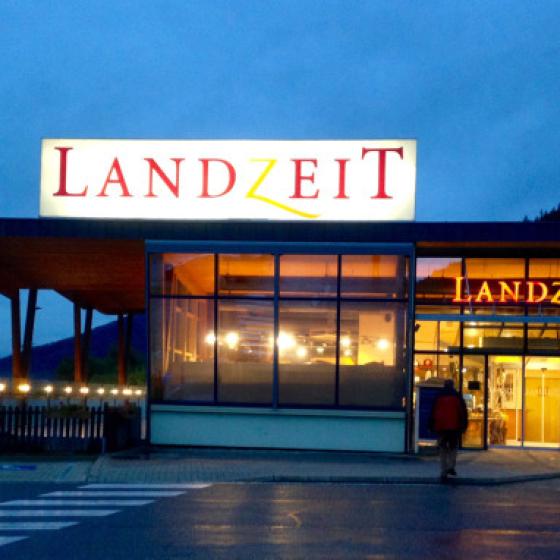
When I mention to fellow Australians about large timber buildings I usually get asked about fire resistance. Ask the same question of those in the industry in Europe and there is a bit of a roll of the eyes as they are so used to the question and then out comes all the vast amount of testing that has been done. Be assured that there has been a lot of testing of engineered timber and its use in buildings. A lot of the information is on line or available from those involved in the industry, we should be embracing timber construction not resisting it.
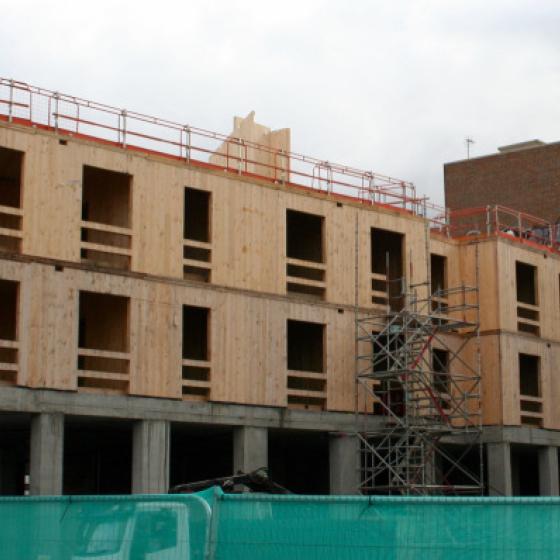
Dalston Lane a significant timber structure
From a building perspective the designs obviously reflect the local conditions, built solidly and to last. Doors and windows are triple glazed and very much sealed against the elements; rooves are sloped, with ridges to hold snow for insulation but not too much. Inappropriate development in the regions was also not approved of as strict standards were employed to maintain the viability of the countryside. I think there are a few lessons we can learn.
The landscape and forestry
Our travels through northern Italy, Switzerland and Austria showed us some amazing countryside, mountains and forests. It was autumn and the display of colours was fantastic. My knowledge of the deciduous species was still quite good but I also learned to recognise spruce and larch from their shapes and colours (thank you Erkki). The landscape is very heavily forested and interspersed with small farms. Forestry and the use of trees is very much integrated within the culture. Caring for and managing of the forests is part of the farming and regional cultures. As one of our hosts stated, “we have been doing this for 500 years”. PEFC certification is the norm but FSC certification is rising to meet the expectation of UK customers.
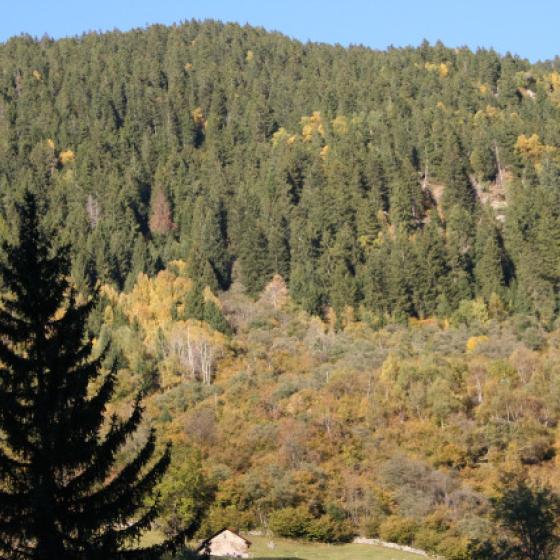
Deciduous and Coniferous forest
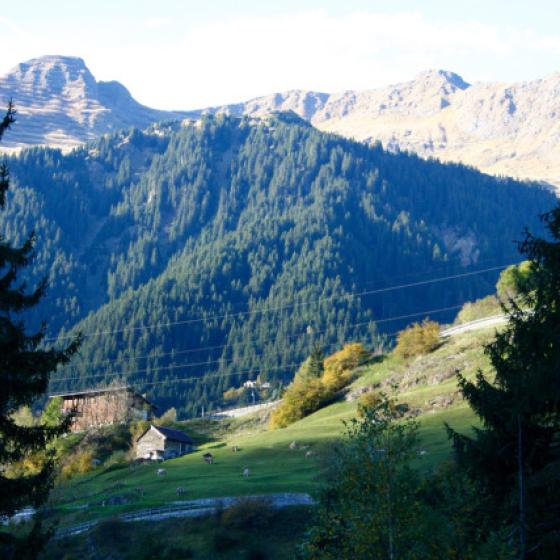
Forests and Farms
It is important for those that live in the regions that the trees are managed well and harvested when appropriate (usually 60-70 years of age). There is very much a stewardship approach to the landscape at a local level and the harvesting of trees is seen as an important source of timber, energy generation and employment. To not harvest trees would appear to be a strange philosophy. There are some important insights into a sustainable culture.
Energy
In the mountains one source of energy generation was surprisingly absent, that of wind power, this was reserved for the lowlands. We did however see a lot of small-scale hydro and PV solar. What was also clear was that biomass energy in a range of forms was very common to supply heat and power to many rural communities. This was obviously supplemented with log fires and some very high quality stacking.
I hope you have enjoyed the blog and the journey. I have learned a lot.
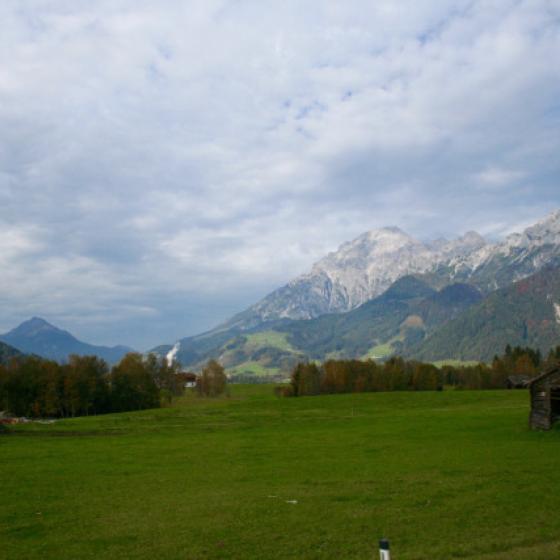
What a landscape
